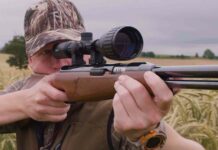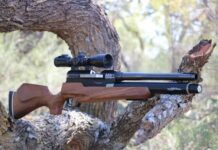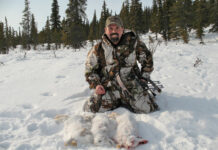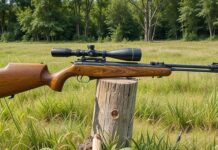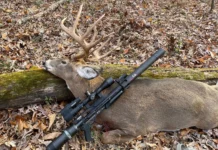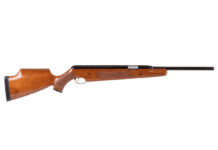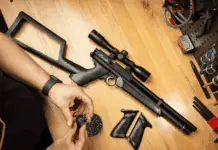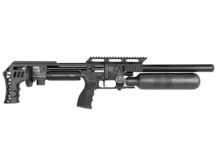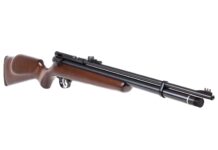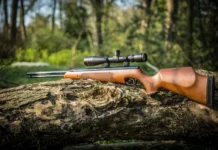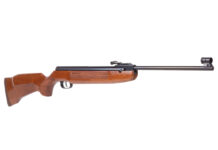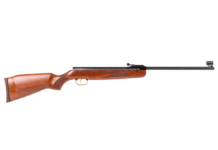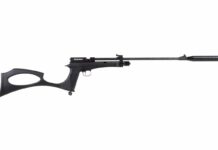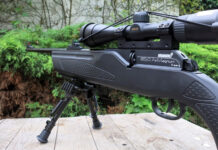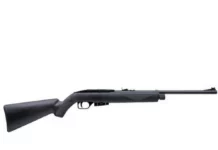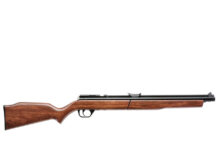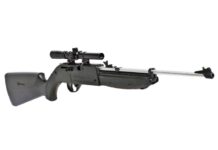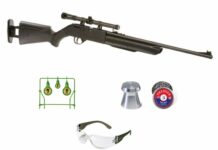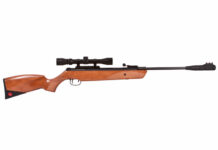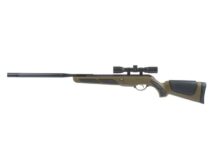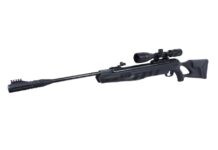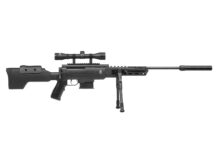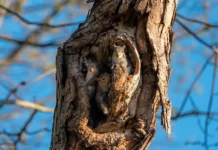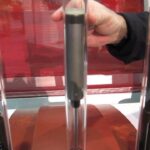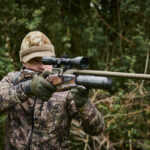Calling in bobcats is a tough task many predator hunters attempt, but few master. After reading these bobcat calling tips, you’ll be on your way to having a better understanding of how to call in bobcats at night and during daylight. A lot of bobcat calling mastery comes from understanding their characteristics, behavior, and perspective on life as they see it.
General Bobcat Calling Tips
Calling Bobcats at Night
Nighttime Setup and Location
How to Call Bobcats at Night
Calling Bobcats During Daylight
Day Time Setup and Location
How to Call Bobcats During the Day
Best States for Calling in Bobcats
Table of Contents
General Bobcat Calling Tips
Generally speaking, bobcats are most abundant near water sources. They prefer traveling through creek beds, along rivers and streams, and even heavy brush areas. They aren’t ones to come out in the open, they almost always prefer to have cover as they are natural stalkers.
In order to be effective in hunting a territory for bobcats, the first step is figuring out if they are even in the area. A section of land that has all the characteristics that cater to bobcats, may still not actually have bobcats.
The first and foremost method of confirming if a bobcat is in the area is to search for tracks, scat, or even dead animals covered with leaves and brush or in trees.
Here’s a couple general calling tips that separate bobcats from coyotes:
- Scan areas of cover heavily while calling, bobcats rarely fully commit to a call like a coyote does.
- Coyote stands may be over in as little as 15-20 minutes, bobcat stands can last an hour or longer.
- Stopping and starting calling sequences can spark a coyotes curiosity, the same tactic will cause a bobcat to lose interest. It’s important to keep bobcats focused on the target, and never stop calling. Decoys are also a great method to keep bobcats focused on the prize.
- Location calls work to find areas with coyotes, but scouting and observing is the best method to find areas with bobcats.
- If you’re calling bobcats in a new area, talk to the local farmers and ranchers or even Wildlife Department to get an idea where they are most commonly seen.
- Foxes and coyotes are more likely to come to your call before a bobcat does. Be aware of this before choosing to discharge.
- Bobcat calls should be higher pitched and at lower volumes as they get closer to the call. Bird and rabbit distress are two go-to calling techniques for bobcats.
Calling Bobcats at Night
The general bobcat calling tips we discussed above apply to calling bobcats at night, but the strategy of night time calling and day time calling is significantly different.
Nighttime bobcat calling is learning how to use the darkness to pull bobcats out of areas of cover, where they feel more comfortable. The darkness gives them a sense of protectiveness, and with the help of red hunting lights you can reveal them in the open without them knowing.
Nighttime Setup and Location
The best areas to setup while calling bobcats at night are open fields near a brush or tree line, open senderos, or even in the middle of dry creeks if there is enough visibility.
Bobcats are notorious to stay in areas of cover, but at night the darkness is their protection so they are far more willing to come out into the open. In our opinion, it is far easier to call a bobcat in at night versus the day time.
Thermals and night vision are becoming more popular for nighttime bobcat hunting, but red hunting lights can be equally as beneficial. Learn how to properly scan when predator hunting and a light can be more advantageous than night vision or thermal.
We prefer using our Predator Cannon Hunting Light Bars for calling bobcats at night, as they light up an entire field in red without alerting the cat, and are fully dimmable for near and far ranges. We’ve picked up a bobcat in the scope at over 800 yards with the Predator Cannon.

Predator Cannon Hunting Light Bar Setup for Calling Bobcats
If you’re interested in a mobile setup for calling in bobcats and covering a bunch of land, the Predator Cannon Hunting Light Bars are most likely a great fit for you. Here’s some different mounting idea’s we’ve seen from bobcat calling contest winners: Predator Cannon Hunting Light Mounting Ideas.
How to Call Bobcats at Night
When calling bobcats at night, once you start…don’t stop. They can lose interest very easily. The good news is bobcats are more likely to commit to a call like a coyote would at night in comparison to the daytime.
It’s best to know where you’re going to setup and scope the area during the day so you’re not fumbling around at night distracting critters around you.
- Calls should be based upon what is more locally available in terms of birds and rabbits: if there are woodpeckers, use woodpecker distress; cottontails, use cottontail distress; jackrabbits, use jackrabbit distress and so on.
- If you aren’t sure what’s in the area, the three distress calls listed above are fairly universal in attracting bobcats. The following are my favorites (in order) – cottontail distress, jackrabbit distress, woodpecker distress.
- Learn how to scan while predator hunting, and never stop. Use the light to your advantage by using it as your camouflage without alerting the target.
- A dimmable red hunting light that is well within their color blind range is key to illuminating the bobcat without alerting them.
- It’s true that if the light is used properly, you can literally walk right up to a bobcat (within 30-40 yards) without alerting them.
- I keep my bow stabilizer light on hand at all times in the event I have to be mobile while calling. It’s small enough to fit in my pocket, but has long range capabilities combined with desirable dimmable controls.
- Constantly scan for eyes, and be prepared to act fast on a committed bobcat.
- Be wary as raccoons, fox, and coyotes are all likely to commit to the same calls you are using to attract bobcats at night.
- Use the wind to your advantage, position yourself downwind from the call to limit the senses a bobcat can use to expose you.
- Even though it’s nighttime – STILL USE A DECOY. Bobcats have great night vision and will still be able to see it. This is a great way to get them to commit to the call.
- My personal favorite decoy is a Mojo Critter, or any furry mechanical toy that has a whipping tail on it.
Calling Bobcats During Daylight
Calling bobcats during daylight can be a tough task to accomplish. One could say they have severe commitment issues unless they are enticed really, really well. The best way to entice them? Well, a decoy… or something similar such as hanging turkey feathers from a limb.
I’ve tried both and a mechanical decoy is more enticing that feathers hanging, but either one is better than nothing.
Day Time Setup and Location
Bobcats are more than likely not going to come out of cover during the day like they would at night, so the key to your day time setup is to be near areas of cover and constantly scan the brush or wooded area looking for a feline sitting on the edge of cover.
It will be your job to spot them camouflaged in cover before they lose interest and leave.
How to Call Bobcats During the Day
- Similar to nighttime calling, the same types of calls apply – go with what is local to the area in terms of rabbits and birds, ideal calls are: cottontail distress, jackrabbit distress, and woodpecker distress.
- Be prepared to see fox and coyotes, as they are more likely to commit before a bobcat will. Raccoons are common at night but less likely to come out during the day.
- Anything can happen, but plan on the bobcat coming in slow and making frequent stops. Keep your eyes peeled, but most bobcats won’t come into sight until the 20 minute mark and may not come until the hour mark.
- Be confident in your scouting and don’t leave too soon.
- Duration of stands are much longer than coyote stands, but when moving from one stand to the next, should move at a greater distance. We typically move at least half a mile from previous calling location.
- Decoys are extremely important to keeping the bobcats attention. Never stop calling, minimize your movements, and make your shot count. A spooked bobcat is tough to call back in no matter what your buddy says.
- Be prepared to discharge when you are capable of taking the shot. Don’t wait too long. Despite a running call and action-packed decoy, bobcats can still lose interest very easily.
- Be prepared for the unexpected: there are a few times where we’ve called in a dry creek bed that was not pressured and happened to be a bobcat’s territory. Within seconds of starting our call, the bobcat came sprinting down the creek bottom letting out the loudest and most unique sound I’ve ever heard, repeating it over and over. Come to find out it’s known as the bobcat bark.
- A bobcat’s bark is typically their way of chasing another animal from its home territory. It’s a protective instinct, so if you hear it, be ready as you’ve got a cat coming quick.
Best States for Calling in Bobcats
Most states have bobcats, but some are more abundant than others. We are located in Texas, where there is no season for bobcats, but many states do have a season for taking these critters. Texas is home to some of the biggest bobcats in the nation, and they’ve become a nuisance for farmers as they favor feeding on young or injured livestock.
Here are our top 5 best states for calling in bobcats:
- Texas
- Kansas
- Missouri
- Nevada
- Oklahoma
Fun fact: Generally speaking, approximately 2/3 of all bobcat harvests come from trappers who are called to the area by farmers. The remaining 1/3 of harvests are from hunters.
Closing Remarks
Over the years, I’ve seen a bobcat react in just about every manner you can imagine. Each bobcat has it’s own personality and characteristics just like we hunters and our pets do, but I can say that in general terms they are going to come in slow to a call with frequent stops.
They rarely do anything that would make them stick out of the brush, so it’s extremely important for you to closely monitor the area and be aware of change, movement, and the outline of their body.
I can’t tell you how many times I’ve come close to giving up on calling in a bobcat and I do one last scan through brush and end up picking out a bobcat sitting still, patiently watching my decoy.
Thanks for reading along. I hope I am able to help another hunter learn the bobcat calling game and become a better predator hunter like those who helped me.
